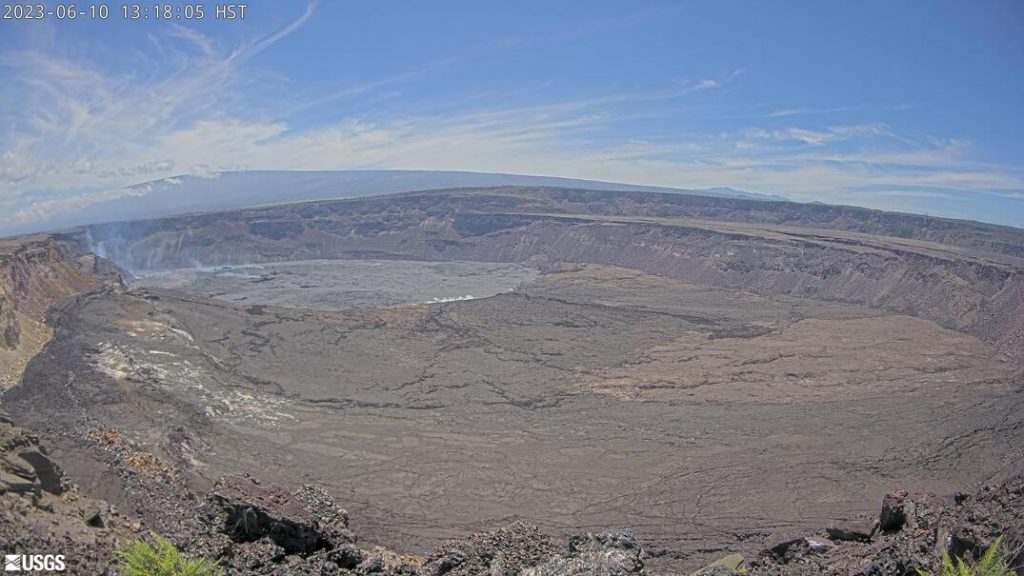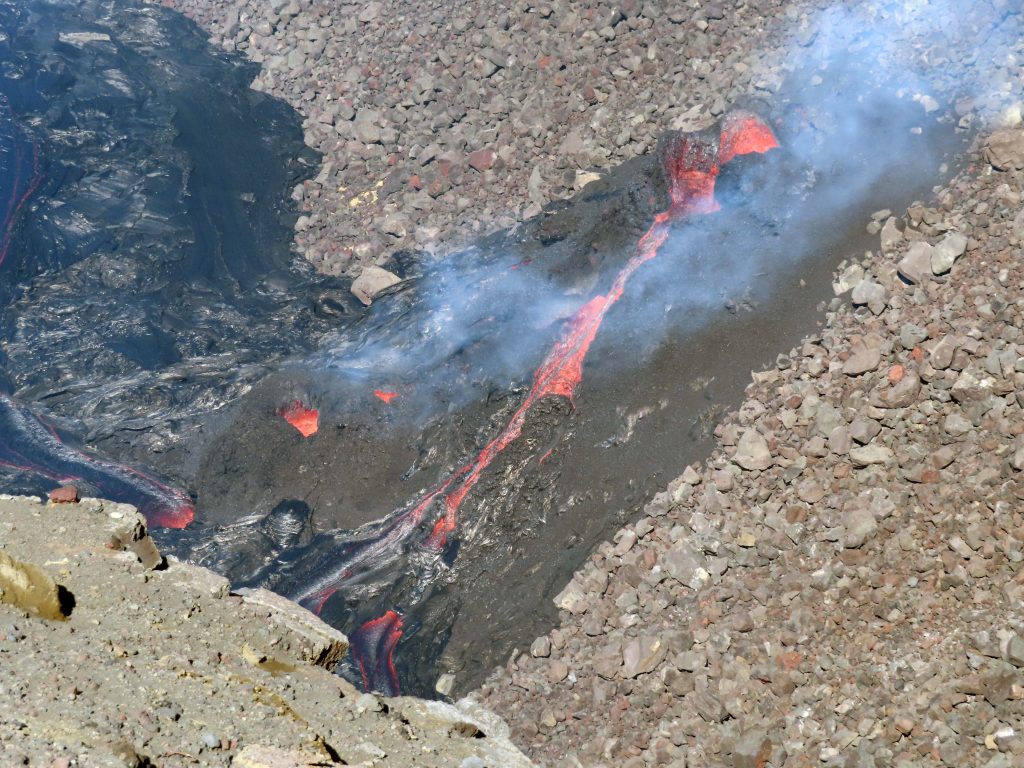Lava fountaining decreases since Kīlauea eruption onset, but still as high as 30 feet
Kīlauea volcano continues activity after the latest eruption onset on June 7. Eruptive activity remains confined to Halemaʻumaʻu crater within Kīlauea’s summit caldera. No unusual activity has been noted along Kīlauea’s East Rift Zone or Southwest Rift Zone, according to the Hawaiian Volcano Observatory.
Multiple minor fountains remain active on the western Halema‘uma‘u crater floor and the vent on the southwest wall of the caldera continues to feed lava onto the westernmost part of the crater floor.
Lava fountain heights have decreased since the eruption onset, but remain up to about 30 feet, according to HVO scientists.
“Active lava and vents cover much of the west half of Halemaʻumaʻu crater in a broad horseshoe around a central uplifted area. An active lava lake is centered within the uplifted area and is fed by a vent in its northeast corner,” according to the Hawaiian Volcano Observatory.
This feature is the “western lava lake” from prior eruptions that has been reactivated along with a smaller circular pool just southeast of the lake. The HVO reports a much smaller area of lava also remained active in the eastern portion of the crater floor overnight.
The HVO reports that summit seismic activity is dominated by eruptive tremor (a signal associated with fluid movement).
Scientists say no unusual activity has been noted along the East Rift Zone or Southwest Rift Zone; steady rates of ground deformation and seismicity continue along both.
Additional hazards include Pele’s hair and other lightweight volcanic glass fragments from the lava fountains that will fall downwind of the fissure vents and dust the ground within a few hundred meters of the vent. Strong winds may waft lighter particles to greater distances. Residents and visitors should minimize exposure to these volcanic particles, which can cause skin and eye irritation.
Other significant hazards also remain around Kīlauea caldera from Halemaʻumaʻu crater wall instability, ground cracking, and rockfalls that can be enhanced by earthquakes within the area closed to the public. This underscores the extremely hazardous nature of Kīlauea caldera rim surrounding Halemaʻumaʻu crater, an area that has been closed to the public since late 2007.
The Hawaiian Volcano Observatory will continue to issue daily Kīlauea volcano updates until further notice.



















